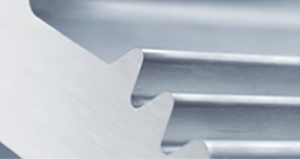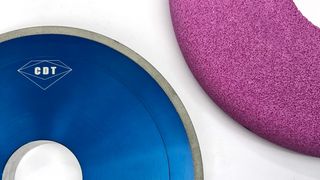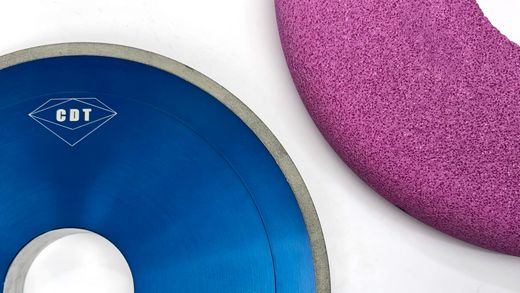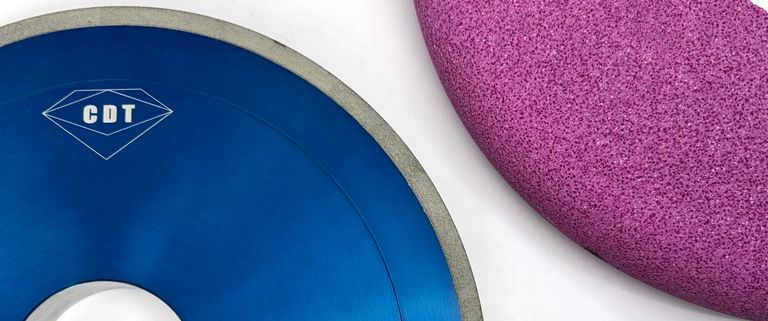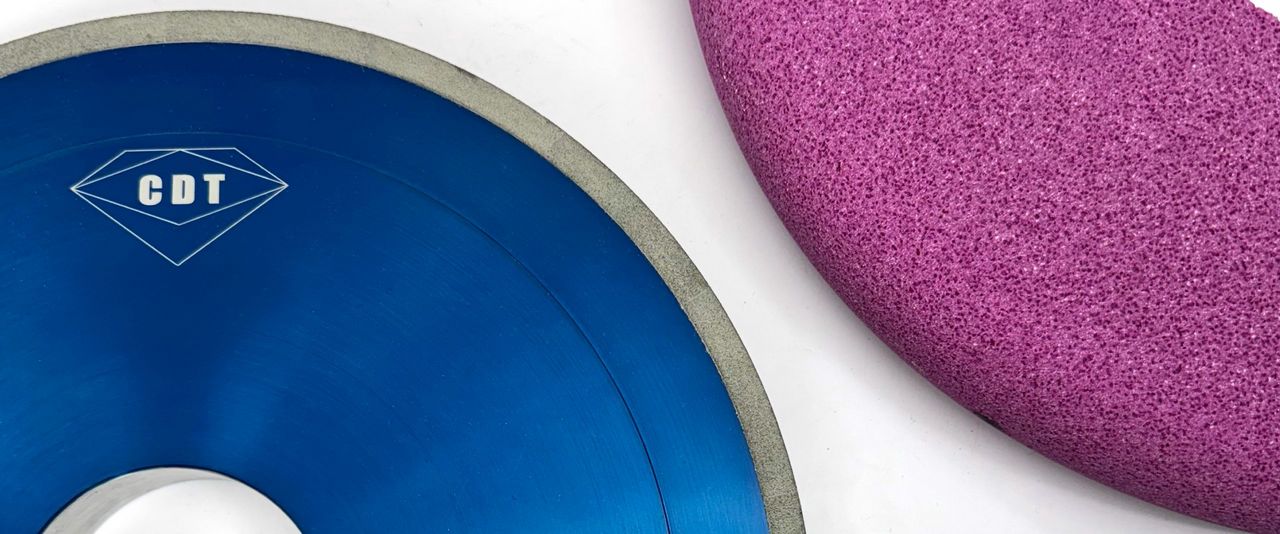Don’t Sleep at the Wheel: How to Choose the Best Grinding Wheel for the Job
Although grinding is a complicated process, choosing the best grinding wheel for an application is straightforward when you apply the right science. To remove the guesswork, we partnered with the grinding wheel experts at Continental Diamond Tool to guide users through this process. The task can be made much easier by knowing in advance details such as the material to be ground, finish and form tolerance, process factors, weight considerations, and cost.


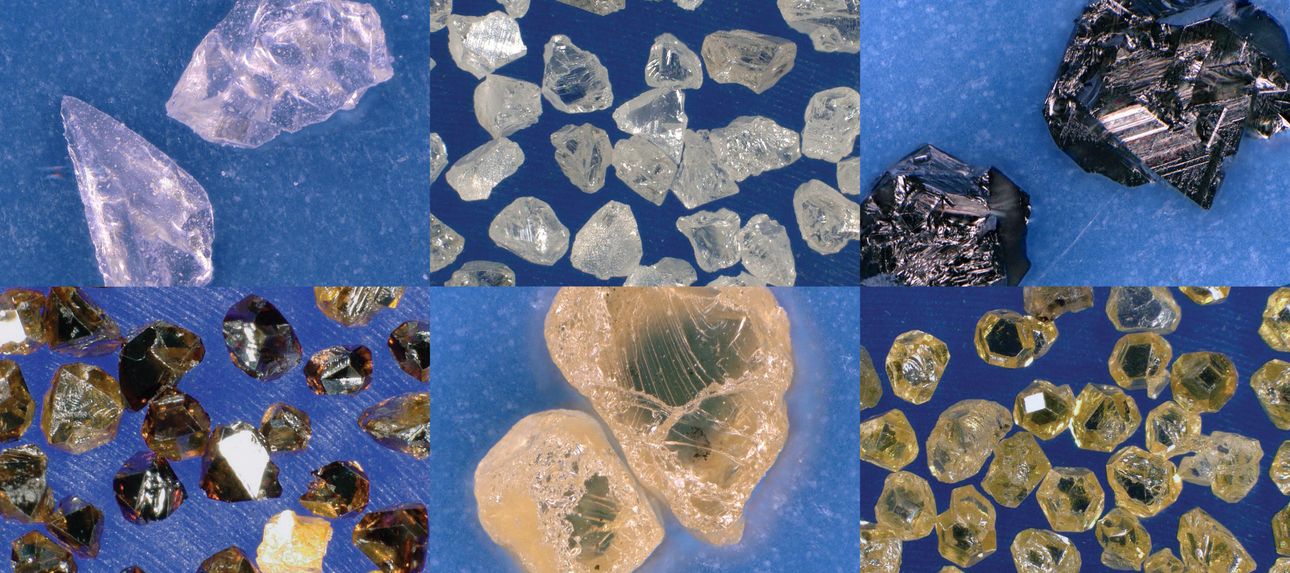
Material
The material to be ground — whether metal, ceramic, composite, or other substance — is the first thing to consider when selecting the abrasive for a grinding wheel. Conventional abrasives like aluminum oxide and silicon carbide have been used in commercial grinding since the 1800s. Superabrasives are a newer technology, composed of diamond or cBN. Superabrasives excel at grinding hard materials with precision and offer the longest wheel life and high removal rates for the most demanding grinding applications. It’s important to evaluate how a material’s chemical and physical properties—such as hardness and reactivity—interact with an abrasive’s attributes to identify the most effective solution.
In general, conventional abrasives such as aluminum oxide or zirconia alumina should be selected for applications that involve grinding steels and steel alloys where carbon reactivity can be a concern. When it comes to superabrasives, experts would recommend cBN for grinding steel for this same reason. For cast iron, nonferrous metals, and non-metallic materials where reactivity is not an issue, diamond or silicon carbide abrasives will usually be more effective, especially with hard materials.
For a deeper understanding of how abrasives and materials interact, watch CDT Engineering Consultant Jon Vansant in Episode 4 of The Grinding Chronicles: 'Conventional Abrasives vs. Superabrasives.'
Episode 4 of The Grinding Chronicles: Conventional Abrasives vs. Superabrasives
Finish and form tolerance
Machinists rely on grinding wheels to achieve the desired surface finish as well as repeatability and accuracy of part geometries. Two critical factors in this process are the grit size of the abrasive grains and the bond system, which holds these grains together. Together, they determine the grinding wheel's ability to meet finish and form tolerance requirements. Selecting the proper grit size and bond system is essential for achieving the best results.
Grit size refers to the size of the abrasive particles in a grinding wheel, and it directly affects the surface finish of the workpiece. Larger abrasive particles (a smaller mesh number) generally remove material faster but leave a coarser texture. Conversely, finer grits (a larger mesh number) remove less material per particle but produce a smoother surface finish. Grit size also impacts form tolerance, as fine-grit wheels are especially useful for grinding intricate details on parts. Their ability to remove less material per pass allows for greater precision in shaping.
When it comes to form tolerance, the bond system of a grinding wheel plays a critical role in influencing its precision. The bond system, which adheres the abrasive grains together, provides the structural integrity needed to perform grinding operations effectively. Different bond systems can be tailored to achieve specific results. For instance, changing the porosity of the vitrified bond system of conventional abrasive wheels can improve shape retention during grinding, which enables tighter form tolerances.
Superabrasive grinding wheels come in several different bond types that can be customized for better performance and precision. Their hardness, wear resistance, cutting efficiency, and shape retention help deliver consistent results in demanding applications. Changes to the bond system can enhance these properties, further improving the wheel's performance for specific needs. When precise shapes are needed, selecting the right abrasive size and bond type is essential for maintaining tight geometric tolerances, ensuring accuracy, and meeting part specifications.
The following list shows the most common superabrasive bond types and some key features. Learn more about these bond types in CDT’s The Grinding Chronicles Episode 6 on bond types for superabrasive grinding wheels.
The Grinding Chronicles Episode 6
- Electroplated: Fast, free cutting and high material removal, best for complex parts
- Vitrified: High efficiency, lights-out machining and fine grinding
- Metal: Long life, best for glass and ceramic
- Resin: Easy to use, low cost, most versatile
- Hybrid: Long wheel life and long dressing interval, high precision
Of course, not all applications require the finish and form tolerance of cBN and diamond grinding wheels. Conventional abrasive grinding wheels have less upfront cost and are sufficient for many grinding jobs.
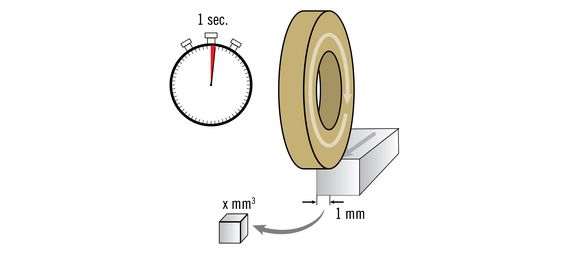
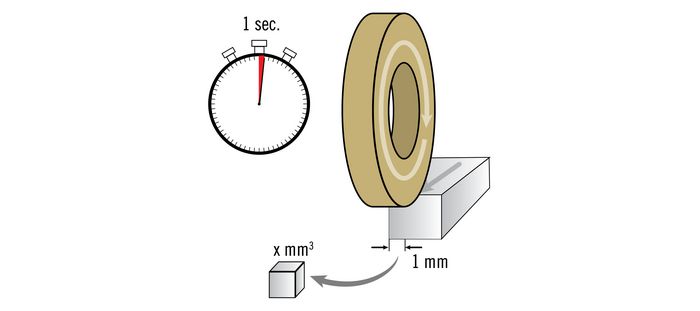
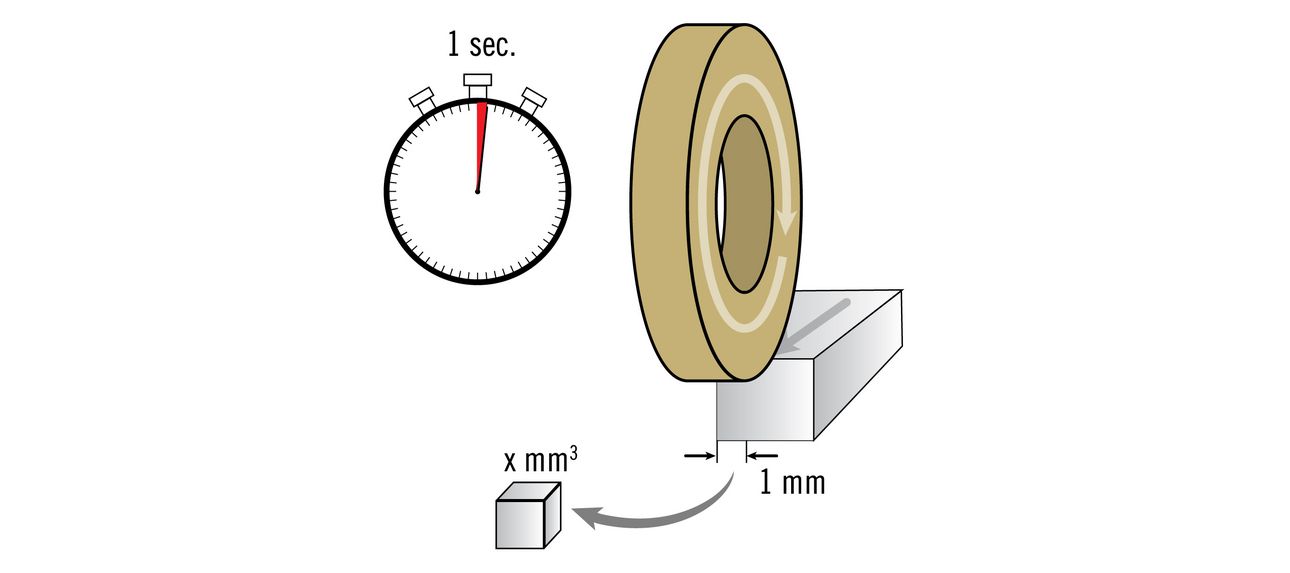
Process Factors
Choosing the best grinding wheel also requires an understanding of key process factors that affect grinding performance and efficiency. Arguably the most important process factor is material removal rate, also known as Q-prime, which is expressed as the cubic volume of material removed from the workpiece per unit of time per unit width of the wheel in contact, i.e. (mm3/s)/mm. Q-prime is calculated by multiplying the depth of cut by the feed rate. A higher Q-prime value translates to faster grinding operations and shorter cycle times. However, excessively high Q-prime values can cause excessive wheel wear or poor surface quality, reducing overall process efficiency.
Thus, optimizing the material removal rate involves balancing it with other critical parameters such as G (grind) ratio. The G ratio is the volume of material removed from the workpiece divided by the volume of wheel wear. A high G ratio indicates efficient grinding; more material is removed with less wheel wear.
Wheel speed and coolant delivery are other factors that influence material removal rate. High wheel speeds can increase wheel wear because temperatures are elevated. Therefore, finding an optimal speed that maximizes material removal rate without excessive wear is ideal. Proper coolant delivery is also essential for controlling the temperature during grinding, which results in maintaining a high G ratio.
All materials have their limits. If you find that your workpiece, grinding wheel, or machine is experiencing excessive wear or damage, even when coolant delivery, machine setup, and other process parameters are properly optimized, it may be time to evaluate your choice of grinding wheel. Increasing material removal rates or extending wheel life may require a transition to a different wheel type. Adjusting factors such as abrasive composition, bond type, or core material can push the limits of your process. Upgrading to a higher-performance wheel, such as moving from conventional abrasives to superabrasives, or custom-formulated wheels can enhance efficiency, reduce downtime, and ultimately improve cost-effectiveness.
Weight
As grinding wheels get larger in size, their weight can pose a concern for employee safety and machine integrity. Conventional abrasive grinding wheels are a solid form of abrasive material, whereas superabrasive grinding wheels bond their abrasive to an inner core. Core material selection impacts the weight. For example,a steel core used on a large diameter OD or creep feed wheel might make it too heavy to reasonably maneuver and cause excessive stress on the machine. Instead, a carbon fiber or aluminum-core wheel is a more practical choice because of their lower weight. For an in-depth look at the science behind wheel body selection, watch CDT Engineering Manager Jeff Wirth in Episode 10 of The Grinding Chronicles.
Cost
The cost of a grinding wheel often comes into play during the selection process, and rightfully so. A conventional aluminum oxide wheel can cost around $300 to $500, while that same wheel made of superabrasives might cost $5,000. When evaluating cost per part, however, that can change the perspective entirely. By running a cost analysis, it is likely that the part is significantly less expensive to produce with the superabrasive wheel, assuming the operator is running the technology to its full advantage. If a less skilled operator is likely to crash a machine, it is less expensive to lose a $500 wheel than a $5,000 wheel. As with anything, it’s important to consider all factors.
These guidelines provide a good framework for choosing the best grinding wheel, but this advice is best implemented by collaborating with grinding experts like UNITED GRINDING North America and Continental Diamond Tool. Talk to us about your application, and we will help you select the ideal grinding wheel—and the precision grinding machine to go with it.
